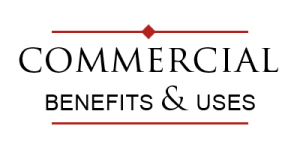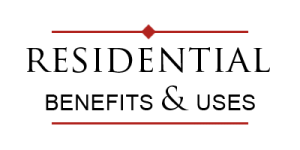Porphyry – Opus Incertum or Porphyry crazy paving is most suitable for surfacing external areas like patios, drives, pavements or external and internal wainscoting. It complements designs with water and vegetation, assuring warmth and color in the environment.
Opus incertum (L, = irregular order pattern) Ancient roman technique in which the stones are arranged casually. Used for wide pavings or as a background to the setting of other figures in opus musivum
QUARRYING AND SORTING
From the open quarry face, small amounts of explosives are used to bring down the stratified material. The porphyry thus quarried is first separated with mechanical shovels and the waste material, in this phase composed of “cappellaccio” (the top weathered part), earth and fault intrusions, is loaded on to lorries and sent off to various destinations (land fill, reclaimed land, crushers, banks of rivers, rubbish tips. The workable part is taken to be sorted more carefully.
The larger blocks are split with pneumatic hammers mounted on excavators or mechanical shovels and reduced to dimensions which can be dealt with by the quarry workers who can carry out the sorting. With the aid of mallets and wedges, and following the planes of the rock, slabs of variable sizes and thicknesses are obtained from the blocks.
 The quarry workers then proceed with the sorting of the slabs on the basis of quality, thickness, size and shape. From the thinnest slabs, tiles or crazy paving will be obtained, from the medium thickness ones, cubes, while from the thicker slabs blocks, kerbs, steps etc., will be made. Obviously the larger the slab the greater its value as it produces a greater quantity when worked.
The quarry workers then proceed with the sorting of the slabs on the basis of quality, thickness, size and shape. From the thinnest slabs, tiles or crazy paving will be obtained, from the medium thickness ones, cubes, while from the thicker slabs blocks, kerbs, steps etc., will be made. Obviously the larger the slab the greater its value as it produces a greater quantity when worked.
From this phase a series of products which can be defined as “finished” do result. The so-called “crazy paving”, tiles of irregular polygon shape and size which can be used for paving or facing of “opus incertum”. These tiles are loaded directly on to wooden palettes of about one meter square which can be covered in plastic and bound and are ready for the warehouse or sale. Since this material is obtained early in the process and needs no further fabrication, the cost factors are greatly reduced. The balance of the material sorted and selected is transported in mechanical containers to the next stage of working.
IRREGULAR SHAPED TILES
(CRAZY PAVING – PALADIN – MOSAICS)
These tiles, as we have already seen, are obtained directly at the end of the sorting operation of the quarried material. The tiles, improperly called Paladin, mosaic, crazy paving, opus incertum, etc., are used for the formation of exterior paving (pavements, courtyards, paths, gardens, etc.) and facing (road walls, buildings, terraces, etc.). They consist of slabs of porphyry of irregular shape divided into various types according to their thickness and size. The upper surface (the trodden surface) will be a natural quarry surface which is not too rough and has a regular surface, but the split edges are irregular.
Standard Type
This is by far the most produced and used, and it is suitable for paving of any surface, even for light traffic. It is not recommended for roads which have heavy traffic. The diagonal must measure a minimum of 20 cm (average 30 cm). The thickness varies from 2 – 5 cm. The weight of laid tiles, allowing for spacing of not more than 2.5 cm, is approximately 85 kg/m2. They are nearly always packed on palettes of about 1m3, weighing 1.5 – 1-7 tones, fastened with heat shrink plastic, or sometimes loose.
Thin Type
 These are suitable for facing and paving of patios, but are not recommended for surfaces which are used by traffic. The diagonal must measure a minimum of about 20 cm (average 30 cm). The thickness varies from 1–3.5 cum. The weight of laid tiles is approximately 60 kg per m2, allowing for a joint of not more than 2.5 cm. They are packed on palettes of 1 m3, weighing 1.5 t approx., and fastened with heat shrink plastic.
These are suitable for facing and paving of patios, but are not recommended for surfaces which are used by traffic. The diagonal must measure a minimum of about 20 cm (average 30 cm). The thickness varies from 1–3.5 cum. The weight of laid tiles is approximately 60 kg per m2, allowing for a joint of not more than 2.5 cm. They are packed on palettes of 1 m3, weighing 1.5 t approx., and fastened with heat shrink plastic.
Large type
 These are used for any type of paving, including surfaces where traffic passes (though in this case the laying must be carried out extremely carefully). They may also be laid in gardens, directly on earth (though sand is better), with large spaces between which are filled with soil where grass can grow. The diagonal of the pieces measure on average about 50 cm. The thickness can vary from 3 to 7 cm. The weight of laid pieces is about 100 kg/m2, allowing for spacing of not more than 3.5 cm. They are packed on palettes of about 1.2 m3, weighing 1.5 – 1.8 t each, and fastened with heat shrink plastic or other binding.
These are used for any type of paving, including surfaces where traffic passes (though in this case the laying must be carried out extremely carefully). They may also be laid in gardens, directly on earth (though sand is better), with large spaces between which are filled with soil where grass can grow. The diagonal of the pieces measure on average about 50 cm. The thickness can vary from 3 to 7 cm. The weight of laid pieces is about 100 kg/m2, allowing for spacing of not more than 3.5 cm. They are packed on palettes of about 1.2 m3, weighing 1.5 – 1.8 t each, and fastened with heat shrink plastic or other binding.
Thin large type
These are rarely produced and therefore not always easy to find. They are used for paving, but not for heavy traffic, and for facing. The diagonal measures on average about 45 cm. The thickness varies from 2 to 4 cm. The weight of laid tiles is about 75 kg/m2, allowing for a joint of not more than 3 cm. They are packed on palettes of about 1.2 m3 weighing about 1.5 t, fastened with heat-shrink plastic.
Porphyry’s composition determines its high compression strength, resistance to stains, slip resistance, and high freeze/thaw ratings. The stone is the most popular paver in Europe, and is favored for its flexibility in design, beauty, durability and low maintenance requirements. ADA Compliant Porphyry pavers are also adaptable to a permeable paving set. The stone is by far one of the most durable pavers in the world. These beautiful materials are available from Milestone Imports. Milestone supports the creativity of architects, planners and designers. Porphyry offers surfaces of various finishes and mixed colorings, tending towards tones of grey, gold, violet and red, depending on where it is extracted. – www.milestoneimports.com




